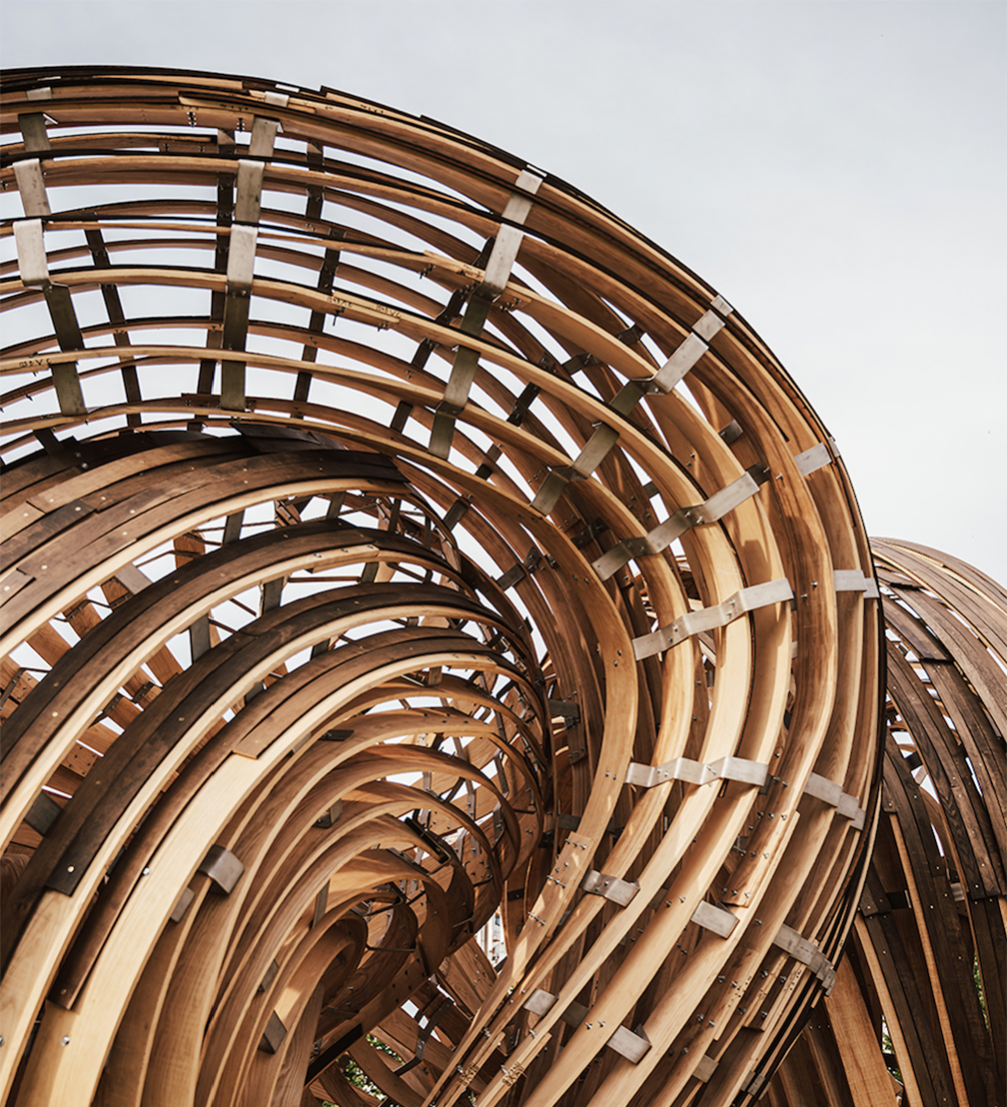
The Tallinn Architecture Biennale was opened on September 11 and will be on display until mid-November, this time exploring the theme «Beauty Matters». While the influence of beauty in many spheres of life is unquestionable, in the world of architecture such a statement may be received with skepticism.
««Beauty» is a taboo word in architecture,» says Dr. Yael Reisner, curator of the Tallinn Architecture Biennale. In the 1930s, when functionality came to the forefront of modernist architecture, beauty, taste, and subjectivity were marginalised. Since then, form has had to follow function, not aesthetics. However, there’s a resurgence of interest in beauty nowadays, the curator argues.
Reisner admits that the theme of beauty has kept her busy for most of her life. In 2010, she co-authored the book «Architecture and Beauty. Conversations about A Troubled Relationship» with Fleur Watson. In it 20 world-renowned architects discuss the importance of beauty. Curating the Biennale is a natural next step, an opportunity for Reisner to demonstrate her vision for beautiful architecture in a much ampler format. The programme of the Tallinn Architecture Biennale consists of a curatorial exhibition, a symposium, a vision competition, outdoor installations, a school exhibition, and various satellite events. In this review, I will mainly focus on the curator’s exhibition and the Biennale catalogue.
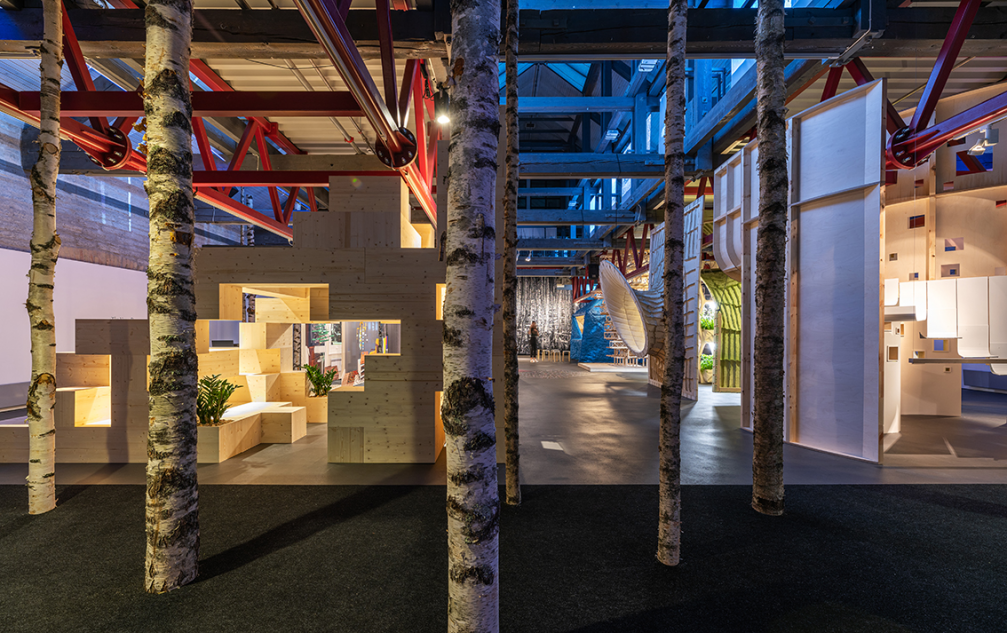
Ambiguous, not literal
To substantiate the importance of beauty, Reisner seeks arguments not in architecture itself, but in mathematics, neuroscience and poetry. «Visual beauty is subjective (not objective) insofar as it is experienced only in ways the subject’s brain permits, rather than how the object itself might be. For example, there is no such thing as the experience of infra-red or ultra-violet beauty because the visual brain is not fit to receive input of that kind,» explains the researcher of philosophy Taylor Enoch in his essay in the Biennale catalogue. He analyses the perception of colour, proportion and form from a neuroesthetic point of view. «In mathematics, an idea is beautiful when it is too surprising or too condensed to be fully understood,» writes mathematician Ron Aharoni while also explaining the mathematical order found in captivating music and poetry. Several essay authors, independently of one another, come to the conclusion that beautiful is what is ambiguous, not literal, that which is mysterious and at the same time honest.
The curator herself seems to have some difficulties in explaining the concept of the biennale, and it is understandably hard as she has to oppose the system established in architecture, and convincingly justify the need for something immeasurable and subjective, which is also self-evident. Therefore, it is interesting to find out what Reisner sees as beautiful, and the answer may be found in her biography.
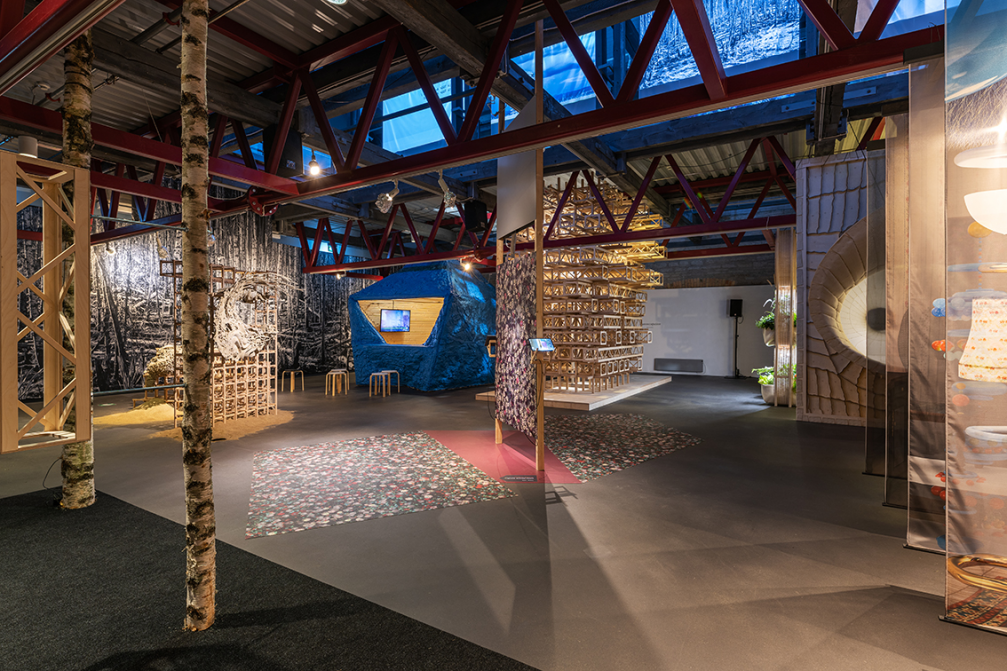
Beautiful parametricism
Dr. Yael Reisner initially studied biology in Israel, later shifting to art history and environmental design, and finally studied architecture at the AA School of Architecture in London. Since 1991, Reisner has worked as a lecturer and guest critic at a number of prestigious architecture schools in Europe, the US and Japan, and has maintained her own architectural practice. Reisner’s competition works and installations, and the academic debates organised and moderated by her, reveal a deep interest in deconstructivism and early parametricism. Among Reisner’s contemporaries, colleagues and friends are architects Greg Lynn, Thom Mayne, Wolf D. Prix, Eric Owen Moss, and Zaha Hadid, but her spouse is Sir Peter Cook.
In the main exhibition of the Biennale, parametricism is represented by the Austrian office «soma», who have modeled a fine sculptural cloud around the empty Linnahall. It resembles parasitic bacteria that gradually devour the monumental building, but the authors themselves see it as a spatial structure that activates Linnahall. The pavilion by the curator herself and Barnaby Gunning is designed in a similar style, with soft wool walls that transform into furniture. «It is our belief that humans are hard wired to find beauty in the complex order of natural form,» the authors say, adding a matching shelf for houseplants to the installation.
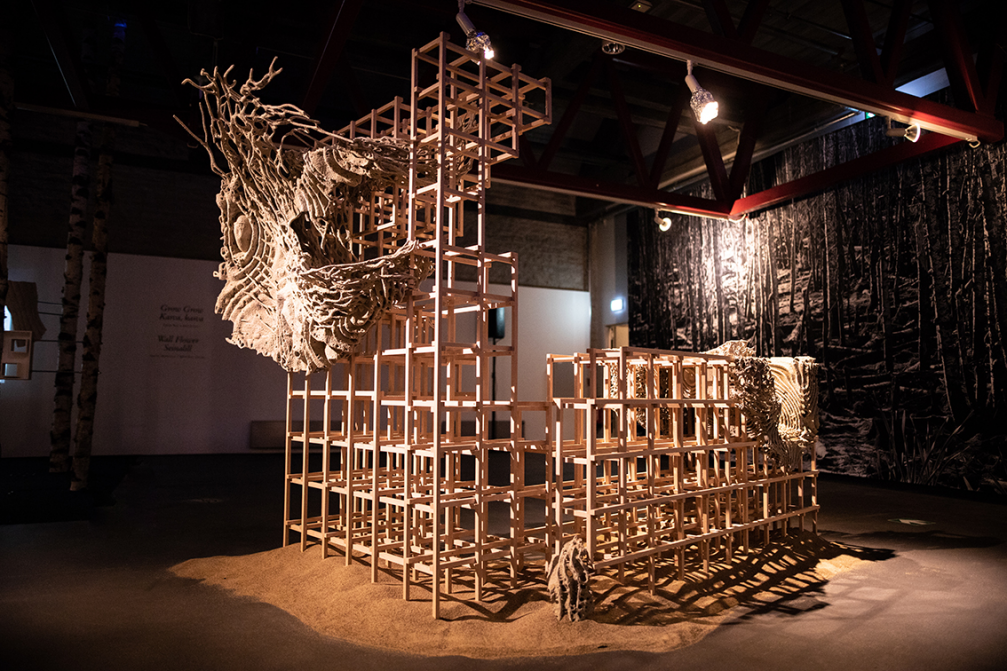
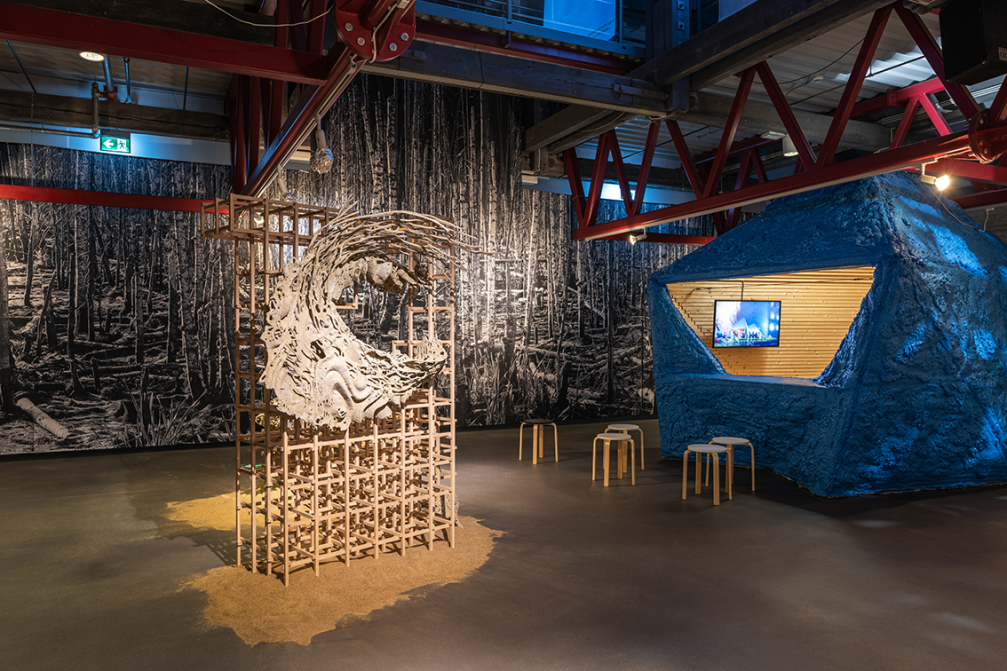
However, not all exhibitors represent the architecture of organic forms. There is also a pavilion by Sou Fujimoto, which evokes the robust aesthetics of «Minecraft» and is appropriately named «Open Cave». Although conceptually the installation continues the author’s explorations of housing design, it lacks the distinctive airiness of Fujimoto’s architecture.
The seemingly ubiquitous duo «Space Popular» present two virtual homes merging with each other. Among other works, this stands out with the clarity of the concept and, in my opinion, the most believable prediction for the future. Although the printed layers of fabric may not be the most convenient way to take in the work, the added VR set and the video allow to fully immerse oneself in it. «The arrival of virtual and augmented reality technologies to the everyday brings communication media to a three-dimensional realm and therefore of architectural concern,» state the authors. This idea is followed up by an installation by Paula Strunden, representing virtual versions of all the works in the exhibition.
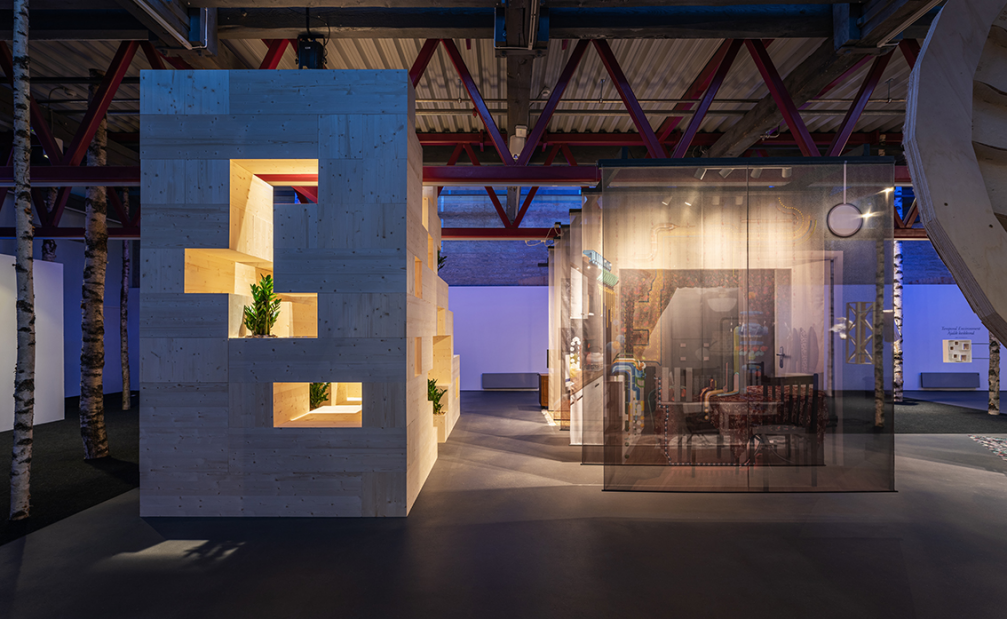
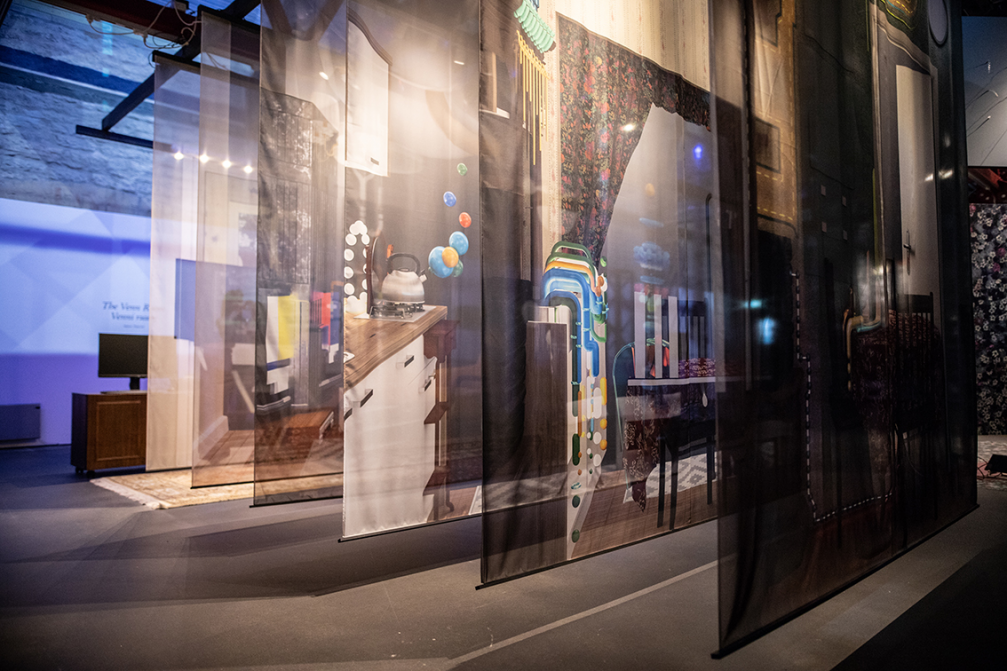
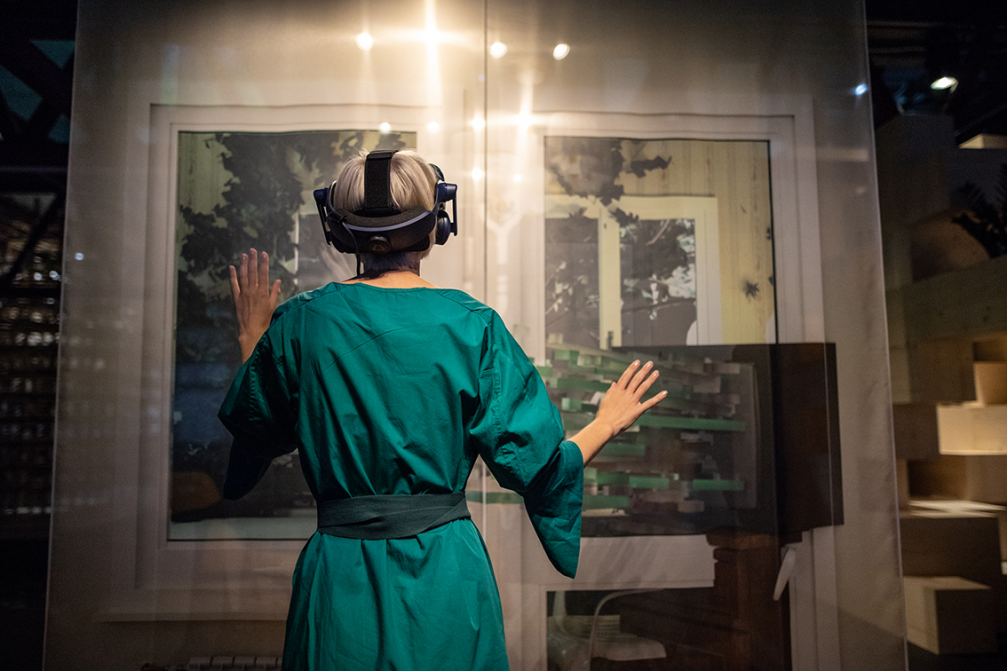
Visually appealing and entertaining are the three-dimensional, animated wallpapers by Elena Manfredini, and the kiosk by «Kadarik, Tüür. Arhitektid», covered in cobalt blue thermal insulation is also eye-catching. Meanwhile, the structures designed by «March Studio» and Kadri Kerge, while addressing well-defined housing questions, do not really stick in memory.
Surprisingly, all of the exhibition works focus not so much on beauty as on the future of habitation. This sub-theme appears unexpectedly and without further explanation, but it cannot be disputed either — the housing issue is always topical and beauty in the living environment is certainly no less important than anywhere else.
The video stories displayed in the mezzanine above the showroom make most of the works clearer, deeper, and one could also say, more beautiful. This has permitted to rid the exhibition of long descriptions, allowing visitors to focus on the spatial and visual experiences. Only two of the eight installations on display at the curatorial exhibition are created by Estonian architects, but all works somehow deal with a location or a current issue in Estonia, albeit quite superficially. The most visible reverence for Estonia at the exhibition is a wall covered in a birch grove in early spring captured by photographer Arne Maasik, as well as the birch trunk columns throughout the room. This tired technique, along with the flowerpots that decorate several of the installations, makes one feel a little uneasy.
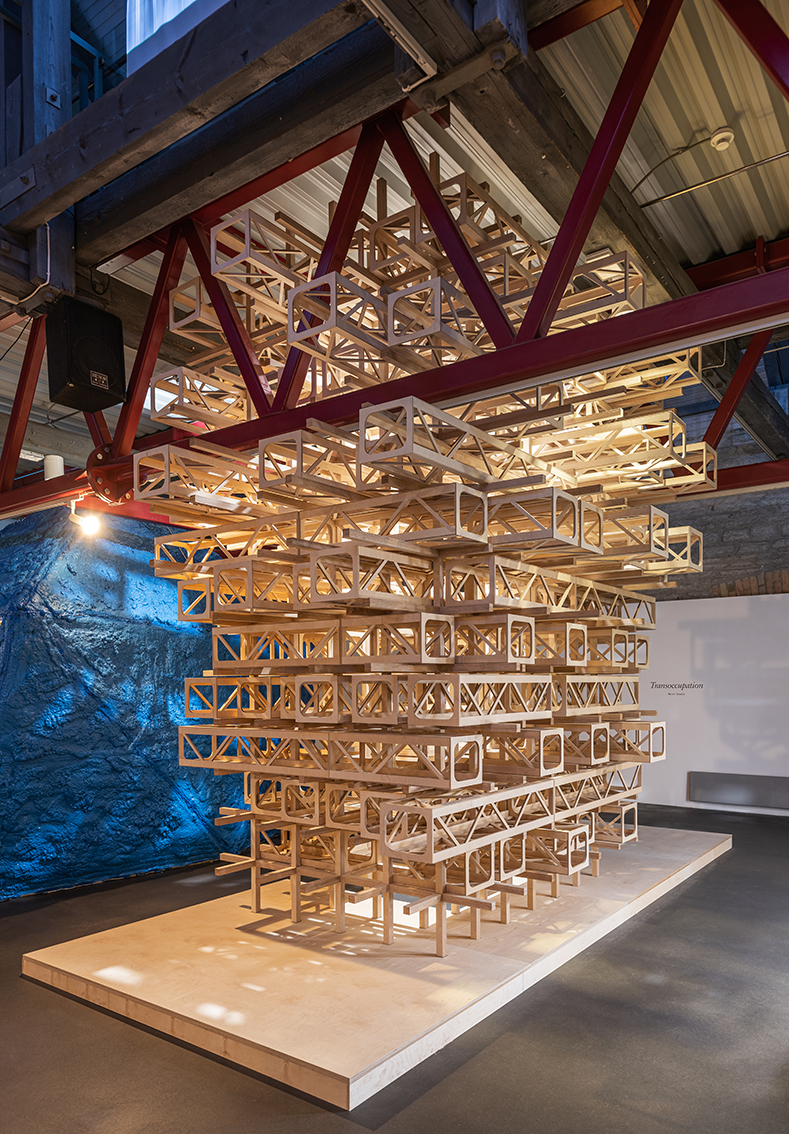
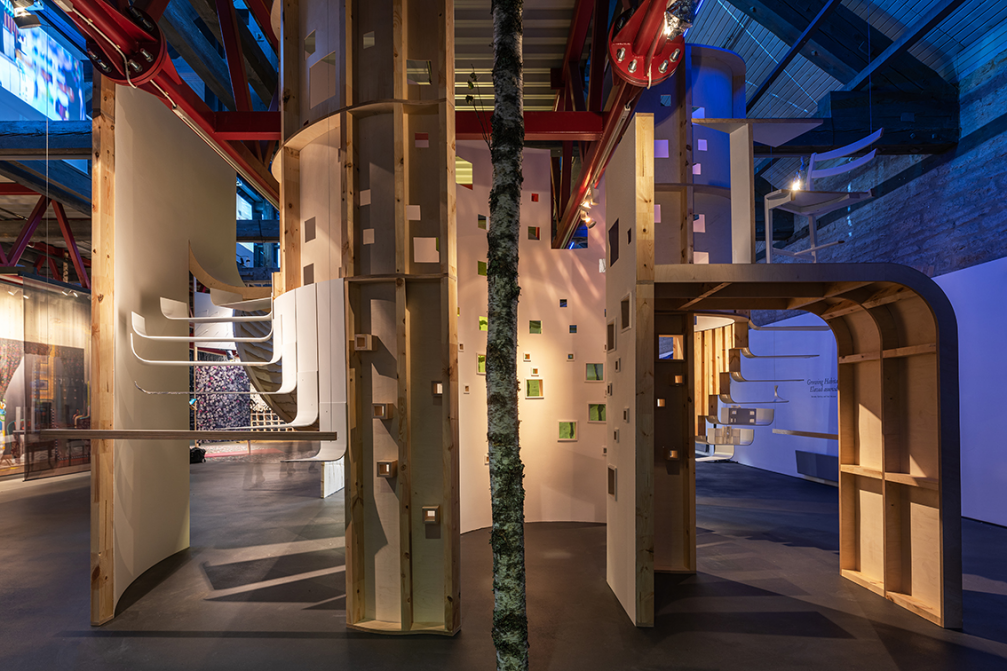
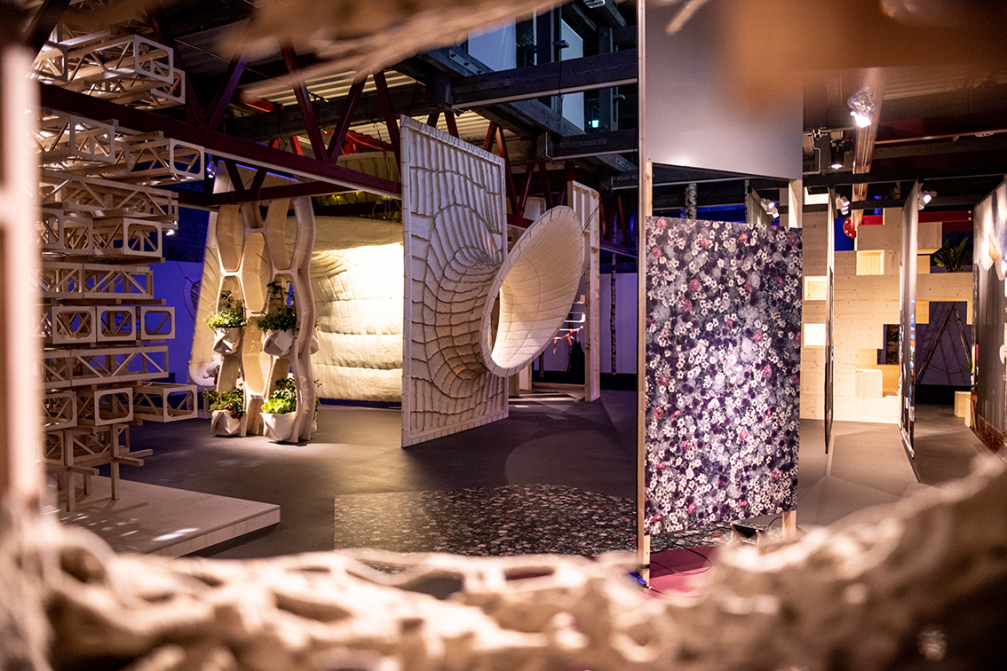
Digitally handmade
In my opinion, the most beautiful part of the exhibition can be found outside the Museum of Architecture — it is the «Steampunk» pavilion by a group of authors from Australia and Great Britain (Gwyllin Jahn, Cameron Newnham («Fologram»),«Soomeen Hahm Design», Igor Pantic, «Format Engineers»). The curved and twisted form contrasts strongly and intriguingly with the museum building, the adjacent port buildings and Rotermann Quarter, and the silhouette of Tallinn’s Old Town in the distance. Seeing the excitement of the authors’ team, it immediately becomes clear how important this project has been to them and how much effort they have devoted to it. The twisted, digitally created form of the pavilion is realised in material by old-fashioned, analogous methods — by patiently steaming and forming each wooden board individually. It is in this labor-intensive process that beauty is born — the material of the pavilion is familiar, but deformed to the point of no recognition; its mode of transformation is not immediately apparent, but the care and craftsmanship invested in it can be felt.
Does the Bienniale’s main exhibition make a convincing case for beauty in architecture? Does it offer new ways to discuss and evaluate architectural aesthetics? Does the Biennale put forward important observations about beauty today? The exhibition and its catalogue offer several captivating and thought-provoking versions of beauty, but I doubt it will be able to influence or even define its relationship with architecture. It will take a clearer and louder voice to reanimate beauty.
But let’s not forget that biennales are never just about their content — they generate events in the city, accommodate new meetings, strengthen the international architecture community. We are very fortunate to be able to visit a number of quality architectural events in a neighbouring country within a few hours drive, see the latest buildings and neighbourhoods in Tallinn, meet colleagues from around the world and discuss over a drink what everyone found beautiful and important. The Tallinn Architecture Biennale will continue until November 17.




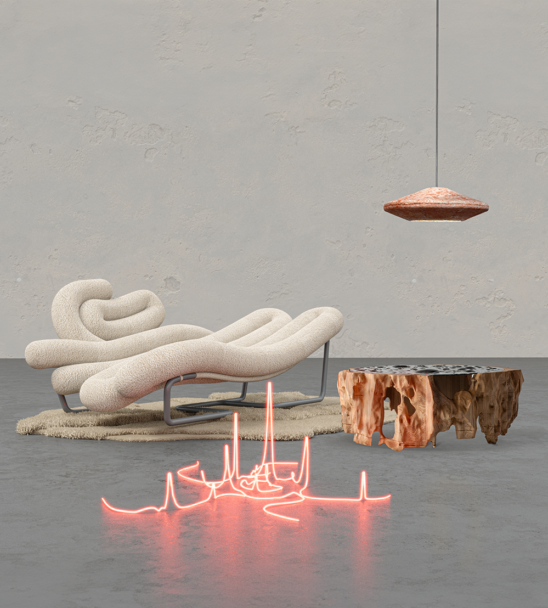
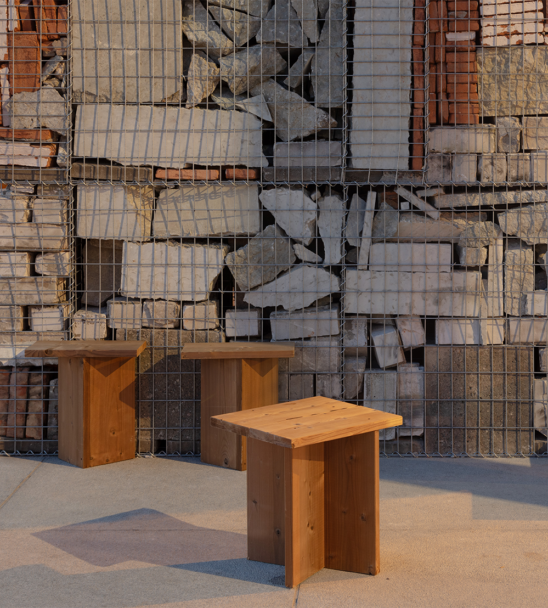
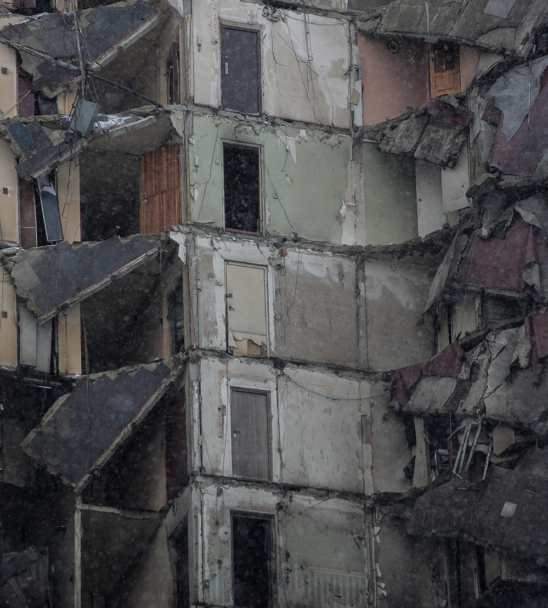
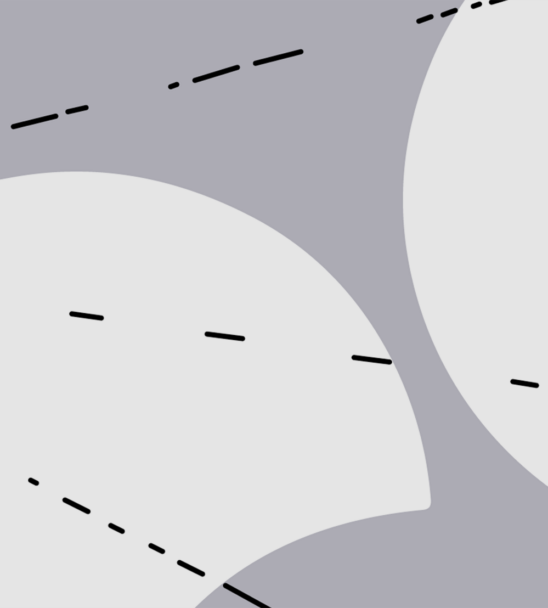
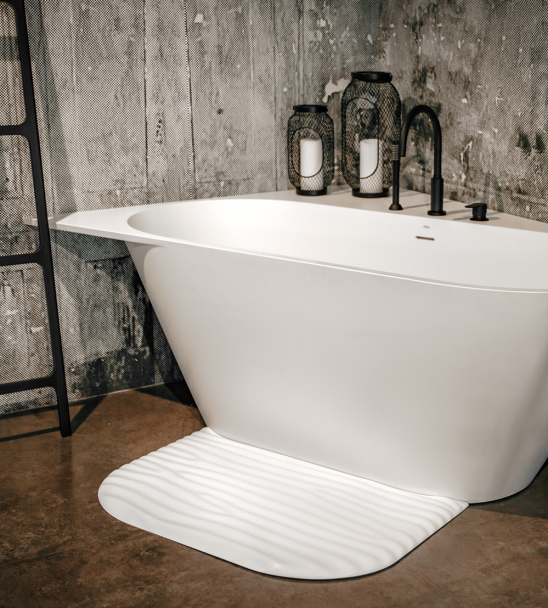
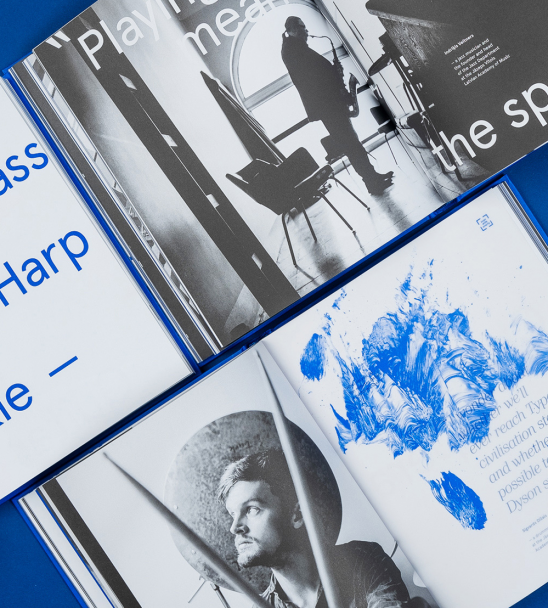
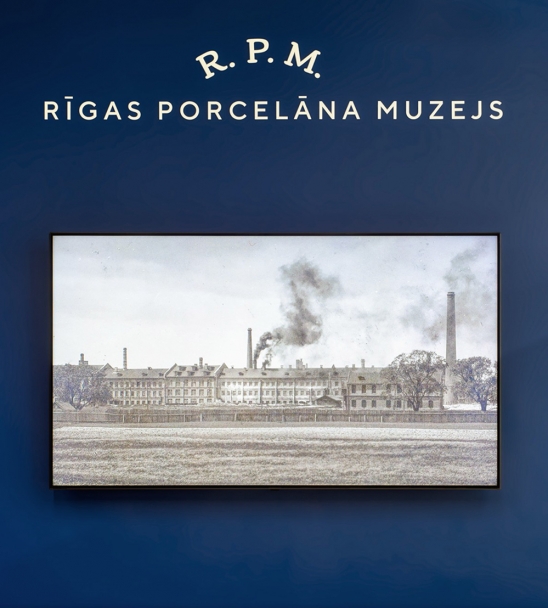
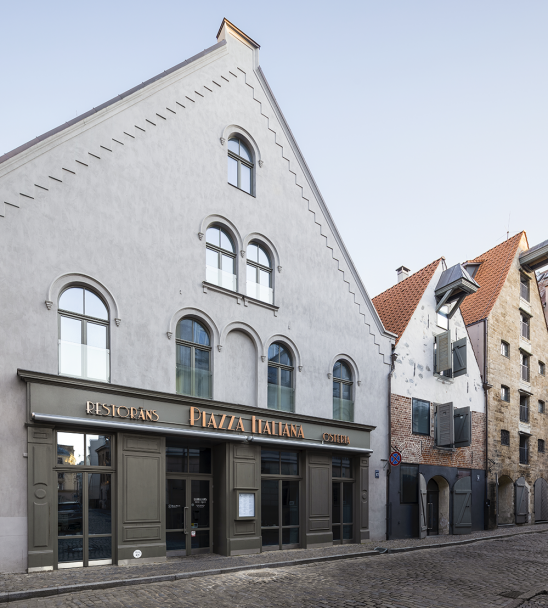
Viedokļi